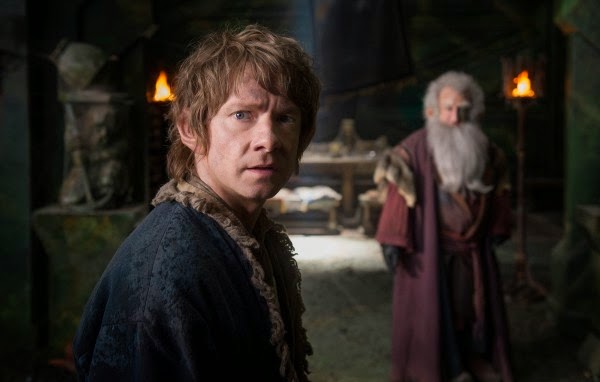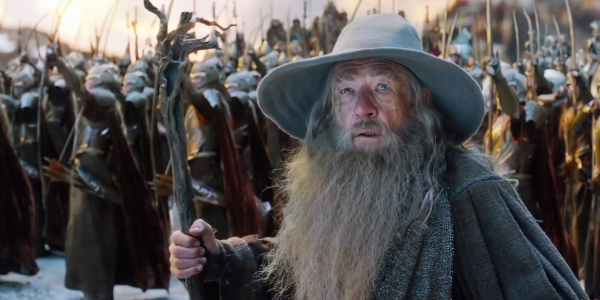The Hobbit: The Battle of the Five Armies Review
Did Peter Jackson really just conclude his second Middle Earth trilogy? His take on J.R.R. Tolkien’s “The Lord of the Rings” was a completely exhausting adventure that in many ways feels like seven films, not three, while “The Hobbit” trilogy feels exactly like it is on paper: one straightforward adventure broken into three parts. “The Hobbit: The Battle of the Five Armies” proves a fitting, exciting conclusion to this particular trilogy, but compared to the conclusion of “The Lord of the Rings,” quite frankly and pun intended – it gets dwarfed.
As with “The Unexpected Journey” and “The Desolation of Smaug,” “The Battle of the Five Armies” is another beautiful achievement in fantasy filmmaking, with stunning production value and an outstanding director in Jackson. It is creative, humorous, action-packed, brimming with talent and gravitas and so many of the things that made “The Lord of the Rings” the achievement it was. So why was this trilogy less acclaimed and somewhat anti-climactic?
Part of this undoubtedly has to do with novelty. We’ve been to Middle Earth before, we’ve seen the makeup and the elaborate sets, we know how Jackson navigates a battle sequence. Although “The Hobbit” has new locales and new characters and was the first film series screened with a higher frame rate, it’s not as groundbreaking an achievement. Also, that accomplishment set the bar high for “The Hobbit” given how many people have returned from “Lord of the Rings” on camera and off.
Yet the real culprit is story. “The Hobbit” is a children’s book, so splitting it into three parts is merely dragging out a streamlined plot of “company seeks treasure and justice, company faces challenges along the way culminating in a mighty dragon, company overcomes odds.” The added subplots put more meat on the bones of the three films, especially “Desolation,” but did not necessarily add complexity or maturity to it.
“Five Armies” at least does not waste any time. The first act is entirely buildup to the titular battle with plenty of suspense as sides try to negotiate in order to prevent an unnecessary war when a much greater evil is growing in Middle Earth. After Smaug torches Lake-town, Thranduil (Lee Pace) and the Wood-elves march upon Erebor, where Thorin (Richard Armitage) has reclaimed his rightful throne. Thorin, however, is corrupted by his greed, and rather than help the displaced people of Lake-town, grows restless because his treasure’s focal point, the Arkenstone, has yet to be found. Bilbo (Martin Freeman), who has been hiding the Arkenstone, sees Thorin’s madness could cause a senseless war, which of course it does, only the battle takes a different shape when Azog the Defiler and his orc army arrives.
So corruption and selfishness become dominant themes of the film until the final battle, which doesn’t disappoint in scale, entertainment, or visual effects. What it doesn’t do, however, is command a vested interest from the audience. And when the larger battle halts entirely in order to follow the main characters, it hurts the larger overall narrative, or rather, calls attention to the fact that there really isn’t one at this point in the story other than “kill the orcs.” Yes, the fate of Middle Earth is at stake, but we already know how things will ultimately play out.
Someone who has never seen the films watching all six in chronological Middle Earth order could be something special, though. “Five Armies” does make “The Hobbit” trilogy a rather strong bridge to “Lord of the Rings,” even in its last shot. In a way, Jackson acknowledges that that tale is the bigger story, the one that matters most. The parting message is kind of like “we hope you enjoyed these three fun movies, but ‘The Lord of the Rings,’ that’s where it’s really at.” As moviegoers who witnessed “Lord of the Rings,” this doesn’t quite work for us, because we wanted to go back to Middle Earth for something more, to build on the experience of “Lord of the Rings.” “The Hobbit,” however, like any good prequel, is the foundation, not the next step, and because the story is so simplistic, it doesn’t quite do enough for us on its own.
“The Hobbit” is a fun, small adventure filled with courage, danger, evil and love set in the world of “Lord of the Rings,” and “Five Armies” is that big scene at the end of the story where everything comes to a boil. That’s the gist of it. The rest is Jackson and his extraordinary cast and crew bringing that elaborate world back to life for us to enjoy one more time.
4/5 Stars
The Hobbit: The Battle of the Five Armies
Directed by Peter Jackson
Written by Fran Walsh, Philippa Boyens, Peter Jackson and Guillermo del Toro
Starring: Martin Freeman, Richard Armitage, Ian McKellen, Luke Evans, Orlando Bloom, Evangeline Lilly








0 Comments
You can be the first one to leave a comment.